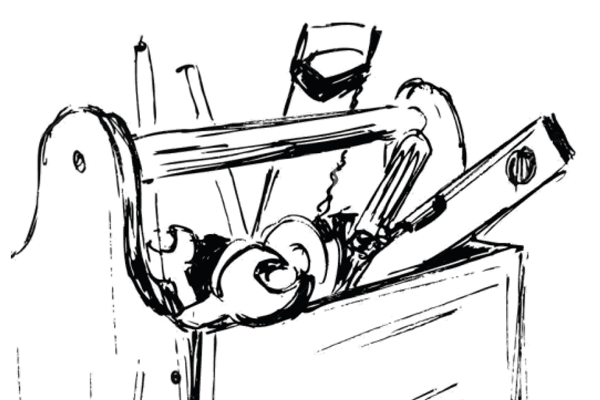Do more than change the drench
Vet Trevor Cook spent his Christmas break getting wiser about sheep.

Vet Trevor Cook spent his Christmas break getting wiser about sheep.
Farmers have other priorities during the holiday break and me telling them something that they already know is not one of them. Which leaves me time to be a farmer on 25 hectares.
Being understocked and with lots of unexpected rain has given the place a regenerative appearance. But lots of break fences will deal to that. The other consequence of that rain has been lawn growth, which I will come to later.
That annual break has given me time to read a book on sheep. Authored by an English lifestyle farmer does mean much tiresome anthropomorphic commentary. But the history of sheep is well captured. I did not realise that wool had been used for so long. Thousands of years.
Apart from the fine-wool types, for sheep to have wool has been from selection. It seems that hordes of woolly sheep did not roam the northern hemisphere and then be domesticated. The outliers with some sort of wool were selected for. So the instinctive thought that sheep have always had wool to keep warm has no basis.
One of the counters to the massive shift to sheep that grow little or no wool is that they will be exposed to exposure. Back in October I saw a flock of no-wool sheep in northern Scotland, which I am told are not housed in the winter without it being seen as a welfare issue.
One of my lessons from last year is that our standard coarse-wool sheep carry the shedding genes, just as the Wiltshires and others do. In the coarse-wool ones the controller genes are not turned on, so the triggers to shed are not pushed. The variation in shedding in the shedding sheep is a reflection of how active the “switch” genes are. The science of shedding is developing as this transformation is happening just as are the genetic programmes that have been so influential in the growth of the sheep industry.
The change is initially being driven by the low wool price and an increasing cost of shearing. So sheep farmers are responding. But I see it just as much a need to reduce the cost of running sheep. I was on a farm in December that had a few thousand shedding sheep. The ewes looked great, the lambs on them just as good; no need for them to be drenched before weaning and no dagging at weaning.
It was easy to see that these sheep will be a big part of the future. The breeders of our traditional breeding sheep will need to respond, not by activating the shedding genes but by taking out the need to dag, crutch, belly at least.
Just as I was finishing this column I got a news flash from New Scientist (which I subscribe to) with details of new uses for wool. Insulation, as a building material, as an absorbent of poisons – when will these saviours of the wool industry make a difference?
The summer rain has once again driven the need to mow lawns frequently. Exactly two years ago when I wrote about this, the result was an almost record level of feedback. To not have to mow my lawns as frequently, I had to do more than just get a new lawn mower. To not have to drench lambs/calves every month I similarly needed to do more than change the drench used.
I gave three reasons why such a system was silly. The cost, the built-in handbrake on weight gains and the failing effectiveness of the drenches were those reasons, which make those systems even more silly today.
The cost has increased and will increase more. Just the drench cost is expected to lift hugely over the next year or two. The need to lift production in response to increased costs and peak product prices does mean growing young stock faster for example. That means having a system that does not inherently limit that gain.
The big one though is that in two years the increased number of properties with now very limited effective drench options has at least doubled. It is now rare to see any sort of drench test result that shows lots of effective drench options.
The good news is that over two years the system changes to get away from the silly systems are proving themselves. We are all learning along the way. I recently came across my worm-management tool box from early Wormwise days. While there were several tools in the box, the big ones were management, genetics and drench. For too long drench has been at the top of the box. There are huge production and profit gains from drench being well down in the box.
- Trevor Cook is a production animal consultant/veterinarian in Feilding.




